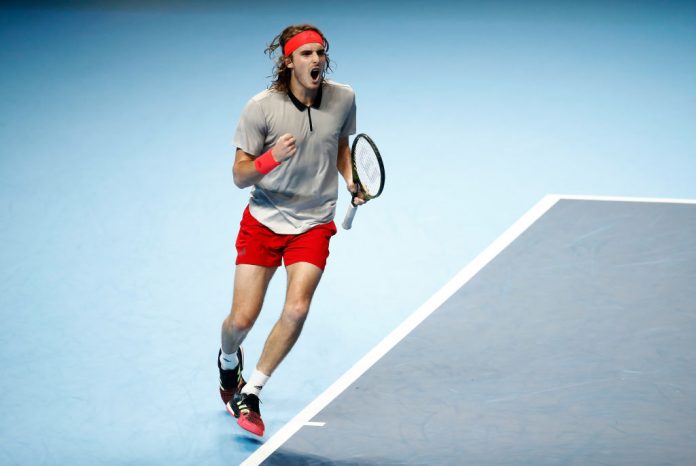
By Douglas Hochmuth
In its inventive way, the ATP’s Next Gen tourney is both brilliant and safe.
Now in its second year, it’s a splendid end-of-the-season showcase which puts the spotlight on the game’s fresh newbies. Grizzled old vets need not apply! And it’s a little-risk place to experiment with just about any innovation that strikes the mind – throw nearly anything up on the wall and let’s see what sticks. Here, things move in a blur. Players win a set after just four games. Matches are best of five sets and – get this – players are no longer pampered. They actually have to fetch their own towels. There’s a no-let on serves, a 25-second shot clock between points, just a five-minute preparation before the match and one medical timeout per player.
The domination of tennis by Roger, Rafa and Novak has created a funnel through which much interest in the sport now passes. But as the Big Three, especially Roger and Rafa, edge towards retirement, the governors of the game face the daunting prospect of a sport without tennis’ long familiar icons, and hints of a certain stale sameness.
Enter Milan’s Next Gen tourney. The brainchild of ATP president Chris Kermode, it runs in tandem with the World Tour Finals in London. See it as a kind of warmup concert or, if you will, a kids’ table off to the side during a Thanksgiving feast where the adults gorge on all the white meat and gravy. Last year’s Next Gen happening had its share of cringe-worthy and sexist shortcomings, as well as moments of inspiration from the likes of Korean Hyeon Chung and Canadian Denis Shapovalov.
So what’s really at stake?
This year’s Next Gen – in which the charismatic Greek, Stefanos Tsitsipas, beat Alex de Minaur 2-4, 4-1, 4-3 (7-3), 4-3 (7-3) to claim the title – gave us many outstanding moments. Clearly, the players were not afraid to show their feelings. In addition to on-court emotions, we were given unfiltered insights into their thinking during the lively conversations they had with their coaches on headsets.
In the semifinal between the ATP’s Newcomer of the Year, Aussie Alex de Minaur, and Jaume Munar, of the Rafa Nadal Academy, the Spaniard won the first set. Then we heard de Minaur repeatedly fuming at his coach Adolfo Gutierrez: “I can’t hit a volley, I can’t hit a volley.” Gutierrez replied that he had to keep coming forward and take time away. The exchange brought fans into the match and provided an added perspective as de Minaur indeed kept coming in, and kept missing, but eventually found his touch and won in five.
On-court coaching frustrated some. Tsitsipas smashed his headset on court. It was largely supported by young players, but older stalwarts said “no way.” One addition that everyone can agree on is the opportunity to make some year-end cash.
Then there was a dicey, against-the-grain problem. A trio of vastly appealing, still very young stars – German Sascha Zverev, Croatian Borna Coric and Canadian Denis Shapovalov all qualified, but chose not to play – ouch!
We are forced to ask, Is the Next Gen anything more than an elaborate exhibition for which the Italian Tennis Federation won a pricey bidding war to give its young players a high-profile stage? Still, the Next Gen tourney gave us plenty of great tennis, and was an exciting petri dish for many a new experiment, in a sport that rather suddenly seems eager to change its ways.
Sure, critics can still insist that the Next Gen tourney is just the kids’ table. But in Milan, we found out there were plenty of trimmings and many a tasty dessert to be savored.


















